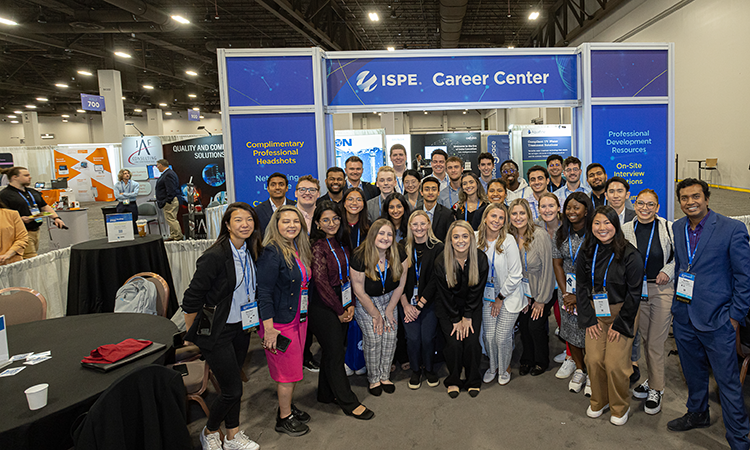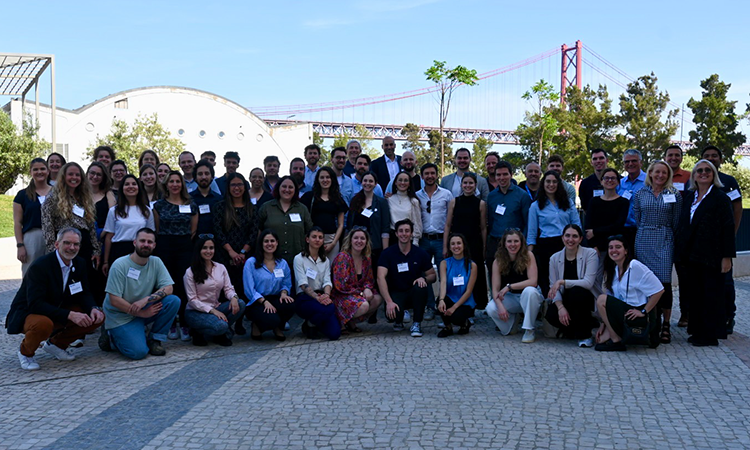The ISPE Emerging Leader community caters to a diverse range of professionals including students, recent graduates, and those transitioning to the pharmaceutical industry who bring unbridled energy and fresh perspectives.
Mission
The Emerging Leader program aims to enrich the industry by empowering Emerging Leaders to shape the future of the pharmaceutical industry, through valuable resources, networking opportunities, and a platform to enhance the industry landscape.
Vision
To ensure global access to knowledge and opportunities for the workforce of the future to thrive.
Why Become an Emerging Leader?
By being a part of the Emerging Leaders program, you are taking advantage of several resources and opportunities available to you that drive success and advancement. Your participation is a proactive approach to personal and professional development, global networking, and industry exposure.
International Hackathons
The International Emerging Leader Hackathons are events for students and recent graduates. The main objective of a Hackathon is to divulge knowledge, in an innovative situation, on the trending topics of the pharmaceutical sector, and to provide and promote networking opportunities between students, recent graduates, and industry professionals.

2025 ISPE International Emerging Leader Hackathon
The ISPE International Emerging Leader community invites recent graduates with less than 5 years of experience in the pharmaceutical industry to join us at the 2025 ISPE International Emerging Leader Hackathon. The Hackathon will be hosted from Saturday-Sunday, 11-12 May in London, England UK preceding the 2025 ISPE Europe Annual Conference.
Emerging Leader CoP vs. Recent Graduate Membership Type
- The term, Recent Graduates, describes the membership type of individuals within 1-5 years of university graduation.
- The Emerging Leader CoP is a place for all ISPE’s members whether you are just starting your career in the pharmaceutical industry or a seasoned professional wanting to provide mentorship and guidance to the workforce of the future.
Membership Key Benefits
- Join the Emerging Leaders Community of Practice (CoP) – to make the connections you need to establish your professional network to participate in discussions on a wide array of topics, and to help provide information to students and recent graduates. Find out how to join.
- In-person- and virtual events and conferences
- A global network of 20,000+ influential leaders in the pharmaceutical and biopharmaceutical industry in over 129 countries
- Educational resources to advance your career
- Thought leadership opportunities
- Enjoy free online access to select Good Practice Guides through the Guidance Documents Portal, and exclusive discounts on Guidance Documents
- Gain access to support and advice while encouraging one another in your professional advancement
- Develop your expertise by attending professional development programs
- Participate in discussions that promote, foster, and direct programs for those new to the industry
- Stay connected with ISPE through social media
- Explore the ISPE Glossary of Pharmaceutical and Biotechnology Terminology
- Find info, from the basics to complex:
- White Papers - Read the latest white papers and give us your feedback.
- Online Learning - ISPE's eLearning offerings include online courses and webinars to help you expand your skills and knowledge from the comfort of your desk.
- White Papers - ISPE white papers are valuable documents designed to educate industry personnel on focused topics.
- ISPE Career Solutions – offering the latest job openings, and free upload of your CV
- Download Justification Letter
- When Recent Graduates Succeed, Your Company Succeeds
- When Recent Graduates Succeed, Your Company Succeeds A4
I joined ISPE because I wanted to be part of an organization that involved local industry leaders and hopefully be mentored by them. When I graduated from university, my focus as a member shifted to gaining technical knowledge by participating in seminars with both local and international speakers. Through attending one of these seminars, I was able to secure my first job. I served as Chair of the ISPE Philippines Affiliate Emerging Leaders Committee, and I urge students and recent graduates to become members of ISPE to enjoy the benefits of being part of an international community.
Rachel Ann Fernandez, Philippines Affiliate
Emerging Leaders Steering Committee















